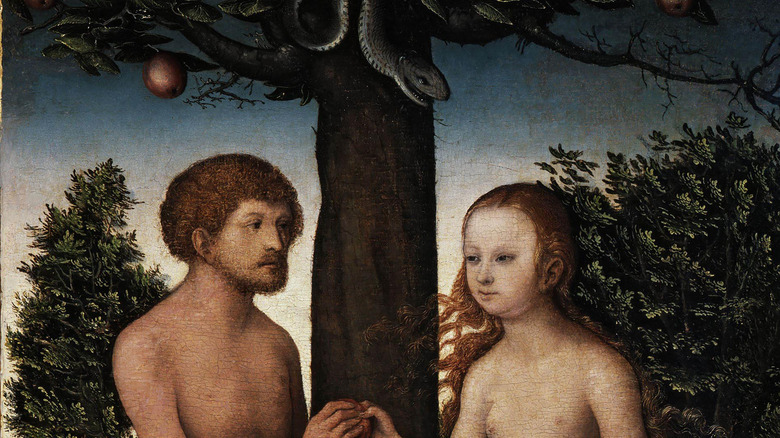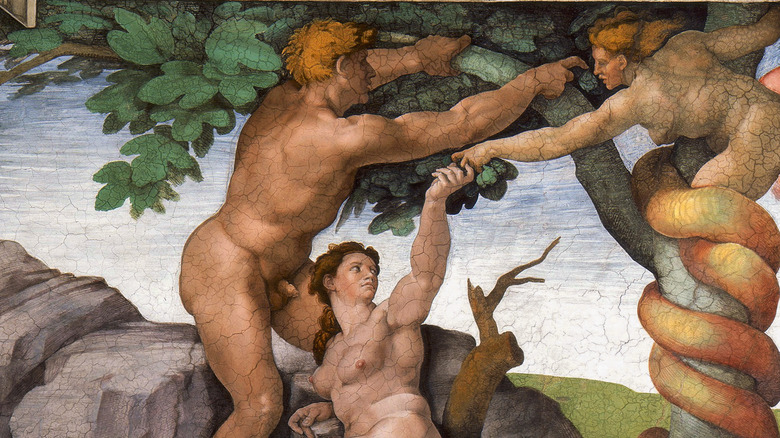Did Adam And Eve Really Eat An Apple In The Garden Of Eden?
It's a common representation in art — Eve, Adam, the snake, the apple — but was the Tree of Knowledge in fact an apple tree? It's a tricky question, since in all likelihood Adam and Eve did not exist (at least not as we'd recognize them from the Genesis story), and their story probably dates to around the 10th century B.C. (via Britannica), long after the origin of homo sapiens 315,000 years ago (again, see Britannica).
But let's stick to the Biblical account. Was the fruit, as referred to in the ancient Hebrew story, an apple? Simply put, it's unclear. The specific fruit is never named in the Bible — it is simply called a "peri," which just means fruit, according to Ripley's. There have been many suggestions over the years about what this fruit was (a fig, perhaps, or a pomegranate), but what we do know is that the authors of the Genesis account may not have even known what an apple was. The fruit wasn't native to the Levant, where the creation story emerged, but instead to the chilly north Asian country of Kazakhstan (via BBC). Though apples have since spread throughout the world, they actually do best in environments that experience frost, according to Christian Today. That means it's unlikely the Genesis authors even knew about apples, and therefore, would have been unlikely to reference one in their story.
Why do we call it an apple?
There are lots of reasons the fruit Adam and Eve ate is today referred to as an apple, even if it's not an accurate depiction of the Abrahamic story. The most common explanation comes from the creation of the Latin Vulgate Bible by St. Jerome (via Ripley's). The Latin word "malus" was chosen by Jerome to represent the word "fruit." This was a bit of wordplay on Jerome's part, because "malus" has two unrelated meanings: "evil" and "seed-bearing fruit." It also happens to be the genus for the common apple: Malus domestica (via Britannica).
The apple also already had a rich mythological history in Western civilization — they're a common motif in both Greek and Germanic legends. Perhaps because of this, it soon became the forbidden fruit of choice in Christian art, such as the 1504 engraving by Albrecht Durer that became a model for later well-known depictions of the story, according to NPR. By the time John Milton's 1667 masterpiece "Paradise Lost," the most famous literary depiction of Adam and Eve's original sin, Milton has Satan boast that he was able to steal Adam away from God with nothing more than an apple ("Him by fraud I have seduc'd / From his Creator, and the more to increase / Your wonder, with an Apple") (via Dartmouth).

